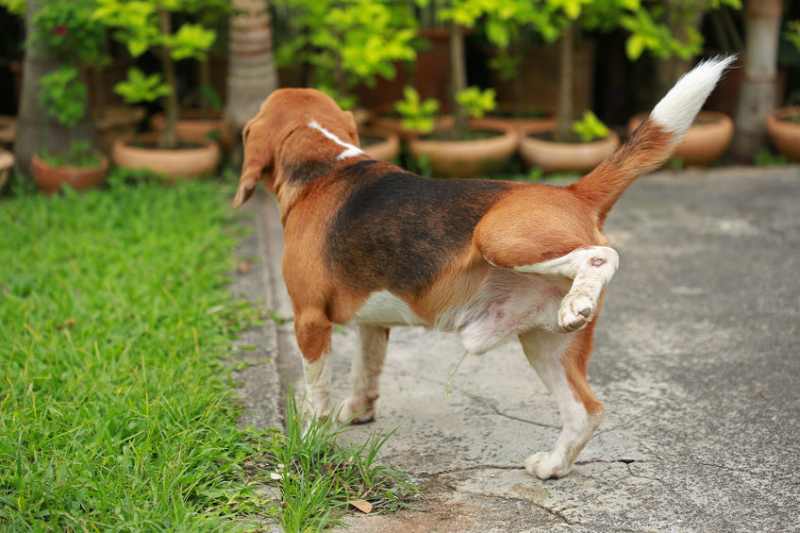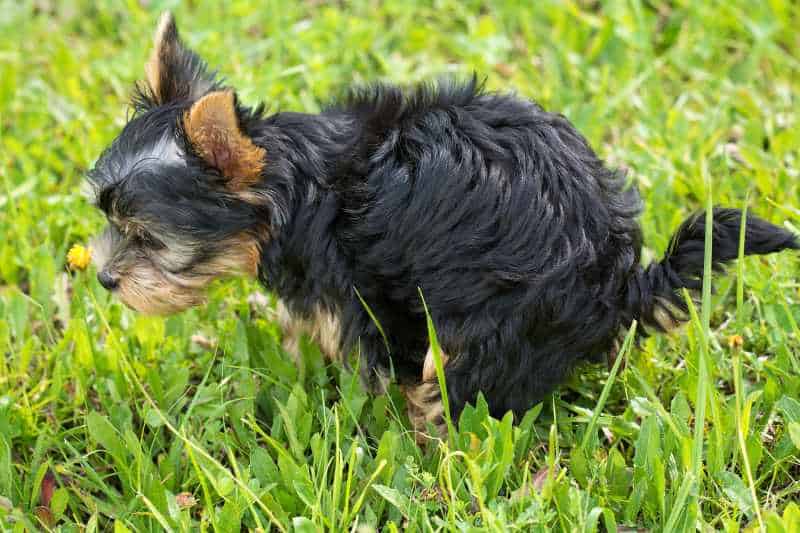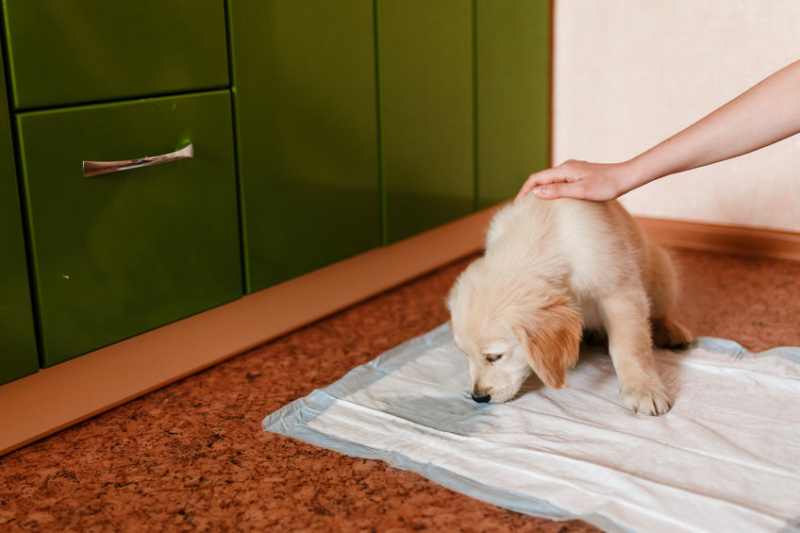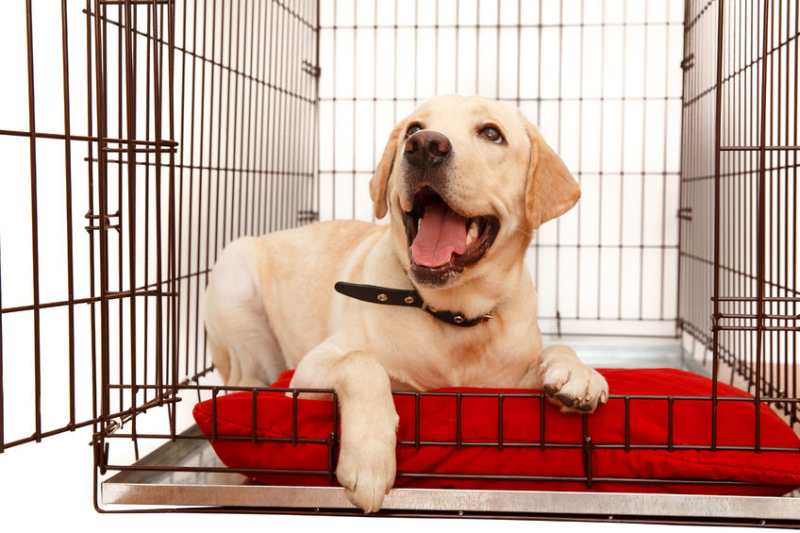If you are new to dog training, one of the first things you will probably need to know is how to potty train a puppy. Done right, it will be an effortless process and a good bonding opportunity with your dog.
Knowing how to successfully stop a puppy from peeing inside the house can be one of the hardest and most frustrating learning curves for new pet owners. And for the puppy, if the owner doesn’t know how to potty train the puppy properly.
For many owners, the excitement of bringing their new puppy home quickly turns into a not-so-pleasant reality after the first few accidents.
Just like potty training a toddler, accidents from your puppy should be expected, no matter how consistent you are.
Although this may be frustrating, (especially after the second, third, and fourth time!), the key to success is how you handle these accidents
Keep in mind: An accident is just that… an accident!
In a hurry and would rather watch a short video? Click here to learn how to stop a puppy from peeing on the carpet and get them fully potty trained.
How To Potty Train A Puppy
It is easy to feel like your puppy is willingly doing the “wrong” thing, especially when they are looking you right in the eye as they pee on your favorite shoes!
Try to remember that this is not the case and your puppy is not to blame.
Young puppies:
- Are unaware of the urge to go toilet
- Are only able to hold their bladder for up to one hour for each month of age
- Don’t gain full bladder control until 5-6 months of age
The ideal scenario for potty training a puppy is that you can spend all of the first week, 7-10 days, at home with your puppy so that at no time is s/he unattended.
There will be the odd few minutes here and there, like your toilet break, etc but you should aim to be home with your puppy 24/7 for the first 7-10 days.
For the times that you are not able to be with your puppy then your puppy should be confined to their own space – not left to wonder about the house exploring. See my article on How To Crate Train your Puppy.
On the subject of crates check out the New World Folding Metal Dog Crates which includes a leak-proof plastic floor, so it’s ideal for potty training.
If your puppy is left to wonder about the house exploring, they are more than likely to deposit little “Gifts” about the house for you to discover later – or not 🙂
Regular Feeding Will Keep Your Puppy Regular
Establishing a regular feeding schedule followed by an opportunity to go to the toilet right after they have eaten – will keep them regular – if you know what I mean.
Be consistent with your puppy’s feeding schedule; that way you can control, to some extent, the times of day your puppy needs to go to the toilet.
Therefore, feed your puppy at regular times each day and always give them a chance to relieve themselves right after being fed.
We currently feed our puppy Blue Buffalo Life Protection Formula Natural Puppy Dry Dog Food
Set Boundaries Within Boundaries
Think about your yard and where the most appropriate area might be to set up a designated area for your puppy to pee (and poop).
Take your puppy into this area after feeding and at other times that your puppy likes to relieve itself.
Mix it Up
One thing we learned very early on was that it pays to mix it up a bit. By that, I mean where your puppy goes to the toilet. Once they get into the habit of where YOU want them to go to the toilet, mix it up a bit.
Train them to go on a variety of surfaces. We’ll assume that your yard is grass, so get them toileting on gravel, concrete, asphalt, and sand or bare dirt if possible.
You don’t want your puppy to grow into a dog thinking that s/he can only go on grass! Or if your yard is mainly dirt, then your puppy needs to experience going to the toilet on the grass.
Good Things Take Time
Once they are in the designated area leave them be for fifteen minutes or so to do their business. Don’t try to hurry them along and don’t keep checking on them – how would you feel if someone kept looking into the bathroom when going to the toilet.
Reward and Praise
Dogs inherently want to please their master, so when your puppy has done their business in the right place reward them. Show them how happy they made you feel.
Praise your puppy with enthusiasm and maybe even a homemade treat.

Get to Know Your Puppies Routine
We mentioned above setting a feeding schedule to help keep your puppy regular. It is also very important to get to know your puppy’s toilet routine so that you can anticipate when s/he needs to go.
By being with your puppy 24/7 in the first week, you will be able to observe their behavior. Once you have an idea of when your puppy needs to go, take them to the designated toilet area and let nature take its course.
Fortunately, your puppy will be reasonably predictable when it comes to a toilet routine. So taking the time to note the times down will make the whole potty training thing much more natural – trust me on this.
And remember to be patient, give them plenty of time and reward them when they have done their business. The reward could be a treat, a game of fetch, or just lots of praise – rubbing, patting, etc
Tell-Tail Signs
Misspelling intended in the title just in case you were wondering.
When you notice that your puppy is sniffing about and circling, or looks like they may be about to squat or makes noise – a whimper or two, then move quickly to take them out to the designated toilet area in the yard.
However, be very careful that you don’t move so quickly or in a way that will frighten your puppy as they may get the message that what they are doing is wrong and thereby develop a fear of going to the toilet.
As a start point, your puppy will want to go to the toilet:
- after eating or drinking water
- almost always after a nap
- and usually after playing
- first thing in the morning and last thing at night
While it is tempting to open the door and let them out for their morning pee/poop without you, don’t! Go with them to ensure they go to the designated area.
Only once your puppy has done this every morning can you begin to let him/her be free.
Likewise in the evening, cold winter nights and all. Wrap up and go with them and wait until they have done the job, then reward them and then put them to bed.
The First Week is The Most Important Week
Taking the time to be with your puppy in the first 7-10 days pays off in the long run. It will take less time to house train them. In the first week you should be able to complete:
- Potty Training
- Crate Training
- Bond with you and establish a level of trust
- Establish yourself as the Pack Leader
- Start to train your puppy to walk on a leash
If you are not able to spend at least one week with your new puppy then your first step should be How to Crate Train Your Puppy
To Leash or Not to Leash
Some dog trainers believe that your puppy should always be on a leash when potty training, and this might work for some people and their puppies. However, we have found that it works best to leave them to it.
The only condition being you can keep a discreet eye on them to ensure that they remain in the designated area. When they begin to stray out of the area, simply encourage them back.

Puppy Potty Training Tips
Now, no matter who you talk to or how many books you read, or YouTube videos you watch, every puppy is different. This is why it is essential that you get to know your puppy.
The important things to remember are:
- Observe your puppy to learn their toilet routine
- A feeding schedule will help keep your puppy regular
- Set aside an outside toilet area
- Accidents will happen
- Be patient, stay calm and reward your puppy lavishly
- Be consistent with feeding and toilet timings
- Be persistent but not overbearing
- Clean up the crime – unconditionally
- Crate train your puppy at the same time
Consistent Training is Key
Consistent and persistent training is the key to house training a puppy. Although “rubbing their nose in it” is an age-old saying, research shows that this is an unpleasant and ineffective method.
Your puppy will not connect this punishment with the behavior and may instead become fearful of you.
Instead, ensure you offer your puppy plenty of opportunities to go to the toilet in the correct area:
- take them to the toileting area after meals
- before playing and before and after naps.
Build Communication
Figuring out how to communicate with each other can be a steep learning curve.
For your puppy, being yelled at following an accident may not only be upsetting, but they will also be unable to understand why they are being scolded.
Instead, refrain from yelling, calmly lift your puppy and move them to their toileting area.
Your Puppy WANTS to Please You
Positive reinforcement training has been proven to be the most effective training method in all types of dog training. This includes house training a puppy.
Not only is it an effective training technique but it also strengthens the bond between you and your pet, building trust and affection.
Instead of scolding your pet during accidents, focus on the successes of house training and lavish your pet with affection and praise when they go potty in the correct environment.

Remove the Smell
This may seem obvious as no one wants their house smelling like puppy pee! But it is also vital to prevent your puppy from returning to the scene of the toileting crime! Puppies will often return to a spot they previously toileted in, so removing the smell is essential.
There is a range of specially formulated enzymatic cleaners, however, a simple and homemade solution may be just as effective.
To make this mix together
- 2 cups of distilled white vinegar
- 1 tablespoon of baking soda
- 2 cups of water
Underlying Causes of Inappropriate Toileting
If your puppy has had success while potty training and suddenly regresses, there may be underlying health reasons such as stress or infections.
If your pet begins to have out-of-the-ordinary accidents, then consider taking them to visit their veterinarian for a check-up.
Given the proper tools, almost anyone can stop a puppy from peeing inside. It can be a rewarding experience, that sets your puppy up for success, strengthens your bond, and opens up doors for future training.
Should You Use Training Pads for Your Puppy’s Potty Training?
As you bring your new puppy home, you may be wondering, should you use training pads for your puppy?
House training a new puppy can be a tough learning curve, and for some owners, training pads are an excellent tool. Puppy training pads are simply layers of absorbable, disposable material that protect your floor and aid clean up! Although some owners may choose to use stacked newspaper, training pads have the added benefit of pheromones to encourage use.
In order to decide whether or not you should use training pads for your puppy, it is important to look at both the benefits and drawbacks.

Training Pads Might Be The Right Option For Your puppy!
For owners whose animals do not have access to a safe toileting area outside or owners with reduced mobility, puppy training pads are a great solution.
If you live in an apartment, training pads are a great tool. These provide your puppy with an indoor toileting space despite having no access to outdoor space. Place the pads on the deck for fresh air and a toilet with a view!
As there is the risk of exposure to nasty diseases such as parvovirus using training pads until your puppy is fully immunized may be the best choice in the following situations –
- you have a shared outside area
- you are concerned an infectious dog may have had access to your garden
- there have been recent parvovirus outbreaks in the area
For owners with reduced mobility, puppy training pads are an excellent way to house train a puppy. As young puppies don’t gain full bladder control until 5-6 months of age they require frequent potty trips, including overnight. Training pads indoors give owners with reduced mobility the ability to place them on their toileting surface as often as needed.
Disadvantages of Puppy Training Pads
Despite their numerous advantages, puppy training pads can be detrimental to some puppy training.
- Dogs quickly learn the appropriate surface to pee on. Puppies are creatures of habit and associate toileting with the feeling under their paws. Once used to the sensation of the pads it can be very difficult to then train your dog to toilet on another surface.
- Training your puppy to pee on grass first eliminates a step in the potty training process and drastically shortens the process.
- Having a new pet can be expensive! With food, veterinary care, and training the costs quickly add up! With this in mind, consider the added cost when deciding if you should use training pads for your puppy.
Things to consider
- Where will be the final toileting location for your pet?
- Do you have access to this location numerous times a day, day and night?
- Will the cost be a barrier?
Potty training is one of the most important aspects of training for a new puppy and requires consistency and patience. Puppy training pads can be a great tool for this process.
If you think that training pads are right for your situation, check out some training pad options here:
- INCLUDES: 100 Regular-size standard-absorbency puppy pee pads; ideal for puppy training, senior dogs, car trips, and more
- 5-LAYER PROTECTION: Multi-layer construction with quick-dry surface and absorbent core that turns liquid into gel on contact
- LEAKPROOF: Plastic lining keeps floors safe from damage; plastic border on all 4 sides to prevent overflow
- BUILT-IN ATTRACTANT: Helps aid in potty training
- PRODUCT DIMENSIONS: 22 x 22 inches (LxW, overall); 19 x 19 inches (LxW, center pad); 1.65 inch border
- INCLUDES: 100 Regular-size scented puppy pee pads; ideal for puppy training, senior dogs, car trips, and more
- 5-LAYER PROTECTION: Multi-layer construction with quick-dry surface and absorbent core that turns liquid into gel on contact
- LEAKPROOF: Plastic lining keeps floors safe from damage; plastic border on all 4 sides to prevent overflow
- BUILT-IN ATTRACTANT: Helps aid in potty training
- PRODUCT DIMENSIONS: 22 x 22 inches (LxW, overall); 19 x 19 inches (LxW, center pad); 1.65 inch border
- INCLUDES: 80 Regular-size puppy pee pads; ideal for puppy training, senior dogs, car trips, and more
- 5-LAYER PROTECTION: Multi-layer construction with absorbent core that turns liquid into gel on contact and carbon for effective odor control
- LEAKPROOF: Plastic lining keeps floors safe from damage
- BUILT-IN ATTRACTANT: Helps aid in potty training
- PRODUCT DIMENSIONS: 22 x 22 inches (LxW, overall); 19.7 x 19.7 inches (LxW, center pad)
How To Crate Train Your Puppy

While not directly related, Crate training and Potty training a puppy often happen at the same time ==> How To Crate Train Your Puppy





